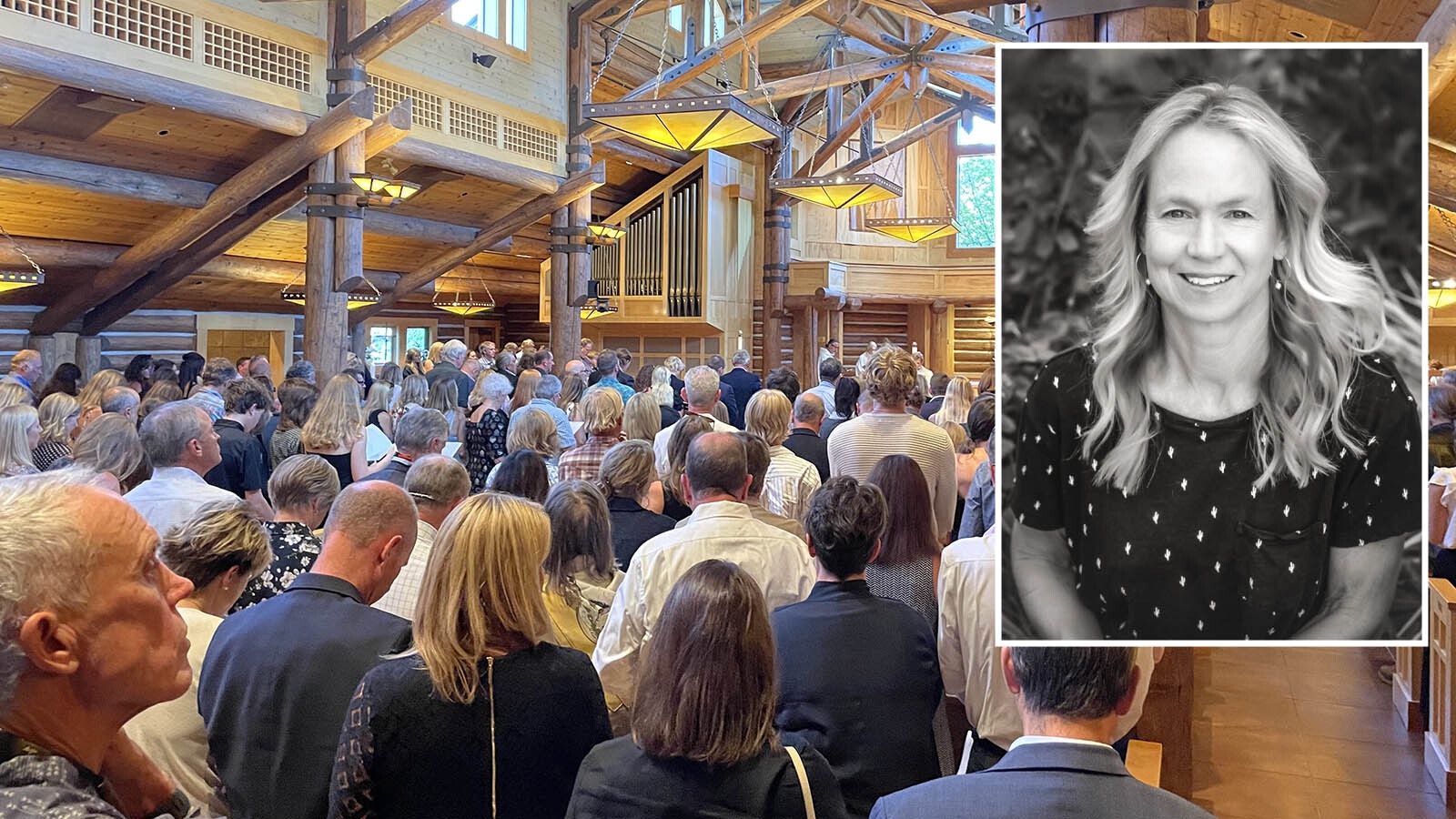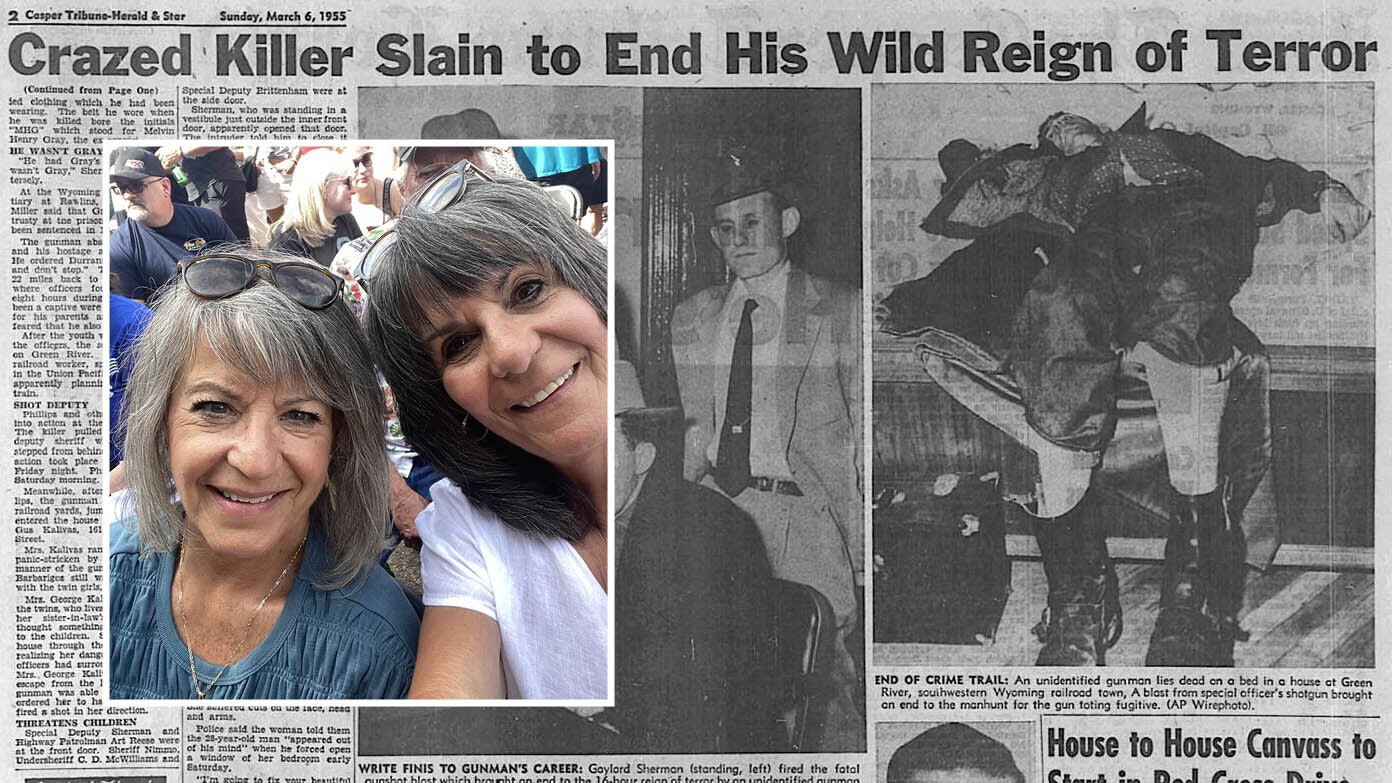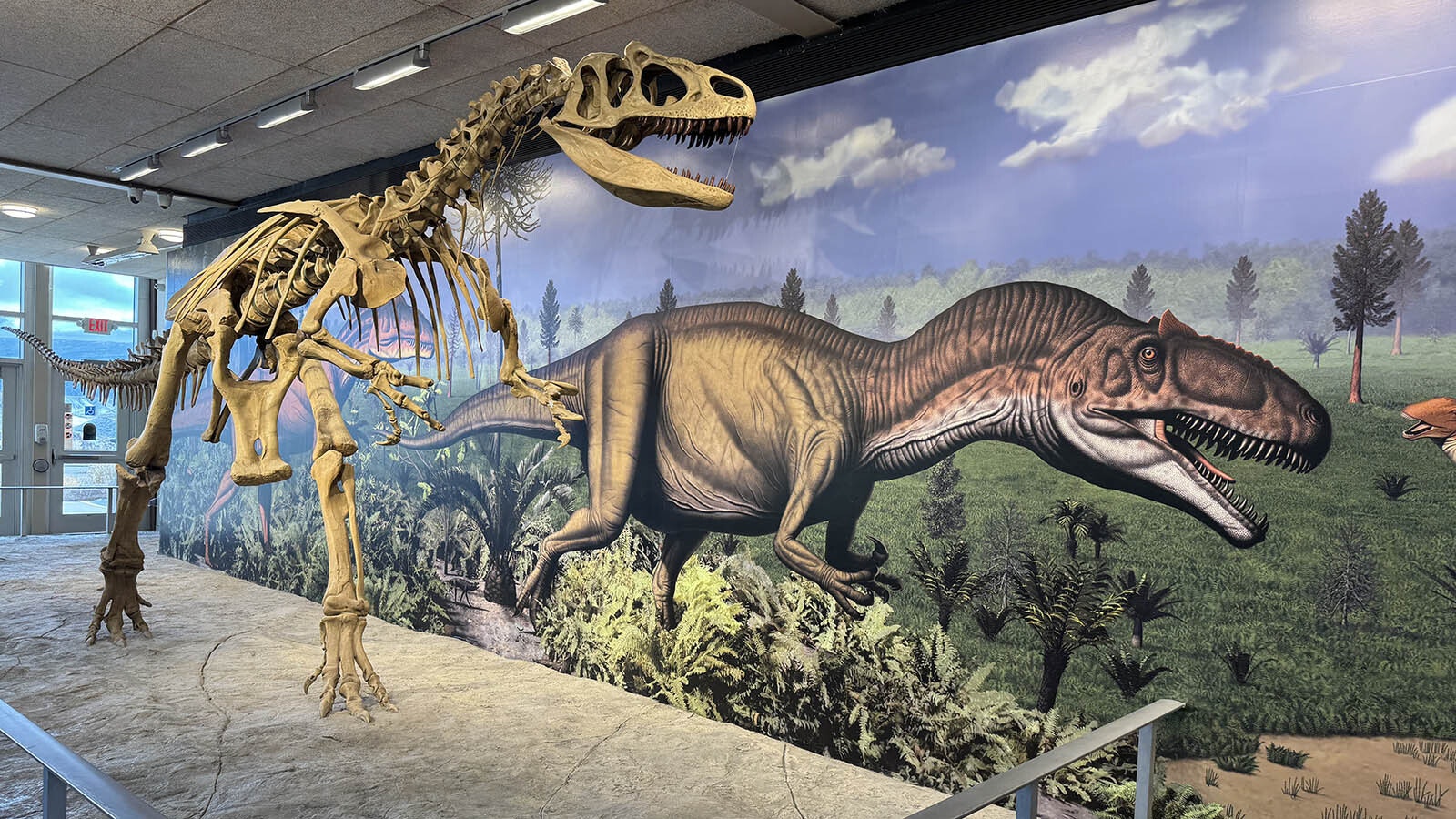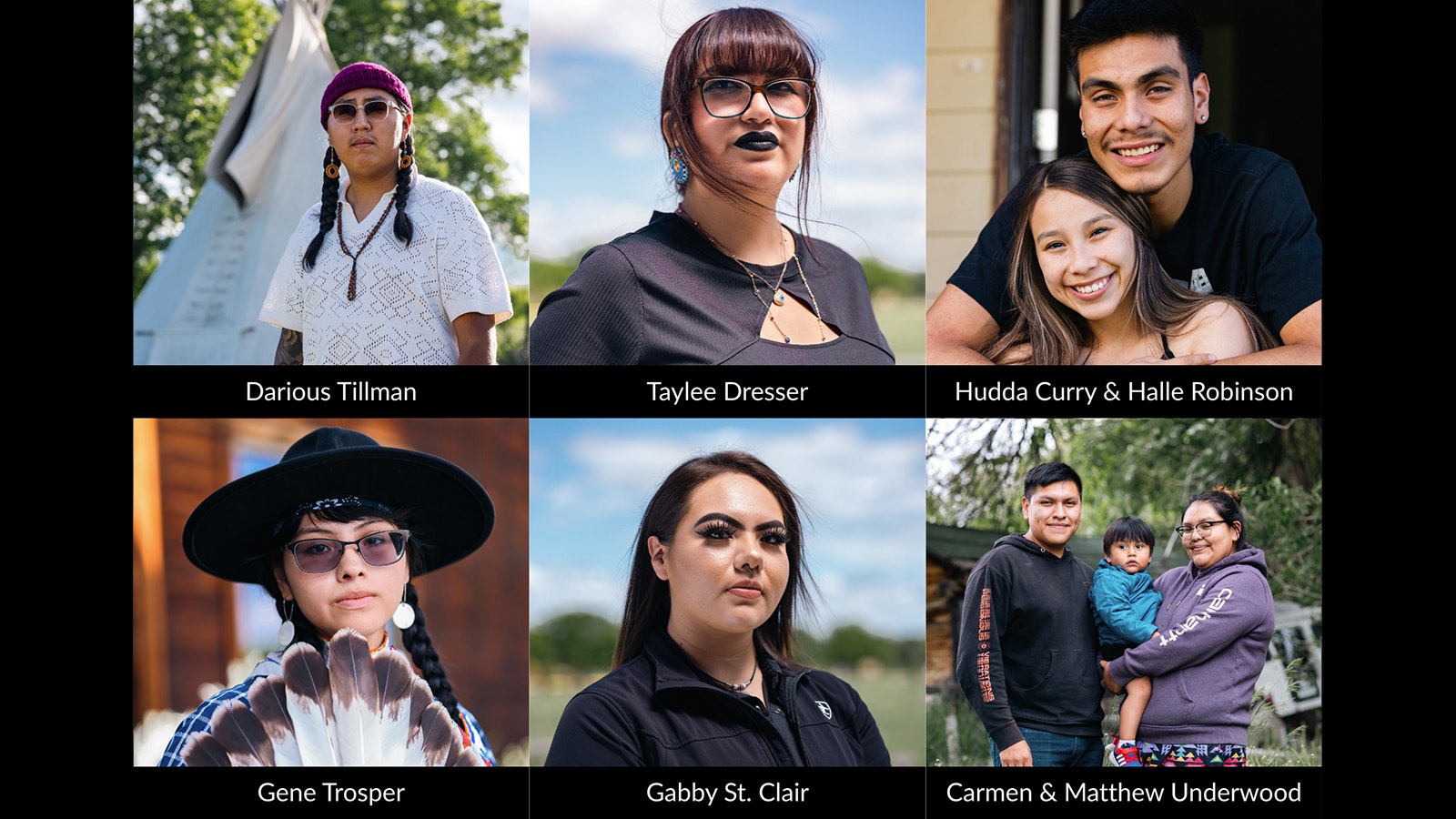Ask Google to search for hot springs and Saratoga’s Hobo Hot Springs isn’t first – or even second or third – result listed.
But it was the first thing co-workers told travel nurse Ashly McDaniel she had to do while working here in Wyoming.
McDaniel gave the Hobo Pool a try Saturday, along with some of her family members, and told Cowboy State Daily she’ll definitely return now that she’s found a true Wyoming gem.
“I liked that there’s three different temperatures, and that it’s outdoors,” she said. “It’s pretty good, and I think it’s kept up nicely.”
The fact that the Hobo Pool is free also gives the hot spring huge bonus points in McDaniel’s mind.
“You meet people and just chat and hear people’s stories,” she said. “I think it’s interesting. It’s cool.”
History Of The Hobo Pool
There’s an alchemy at work here at the base of the Snowy Range Mountains that has long brought people to what they believed must be healing waters.
Mountain snowmelt works its way down deep into the the earth, while fiery magma below heats things up. The combined heat and pressure drive a rich brew of dissolved minerals into the water, which bubble back up as natural hot springs.
Native American tribes gathered at these waters in Saratoga long before Europeans found America for what they believed were medicinal and healing properties.
“Native Americans would have different types of seasons,” McDaniel said coworkers told her. “They would have a season where there was war, and they would have a season of peace.”
The Hot Springs were a sacred place, a neutral ground where all animosities were set aside for a season of restoration and peace.
“The tribes would all meet here and make peace treaties and bargains,” McDaniel said. “And then have rituals. It was just, like, a communal place.”
Bad Medicine
Native Americans stopped using Saratoga’s hot springs in 1873. There’s a rather sad tale behind that.
A member of one of the visiting tribes contracted smallpox from a European immigrant. With no natural immunity nor any real understanding that such diseases are spread by physical contact, infection spread quickly among them.
Many died and the survivors left, never to return.
They believed the waters had been infected by an evil spirit that had made the pools forever bad medicine.
Despite that, it didn’t take long for people to realize the tourism potential of the hot springs in Saratoga.
William F. Cadwelll, while trying to run a ranch, quickly realized it when so many guests kept interrupting his ranch work.
With people literally knocking down his doors for a stay in his guest cabin and a soak in the hot springs, he built the Hot Springs Hotel in 1883. It was an instant success when it opened in 1884, with newspapers proclaiming it the “Pearl of the Platte” and “Wyoming’s Great New Health Resort,” according to the book “Saratoga 150 Years” by Elva Evans.

Hobo Pool Is Forever Free
Wyoming bought 440 acres that included some of the Saratoga hot springs back in the 1920s.
At that time, it had long been thought there wasn’t enough water to bother with a resort, but a suspicious drainage problem at the site led to a discovery.
Once the cattails and muck were removed, hundreds of thousands of gallons of hot water were flowing from one of the springs. So much, in fact, it was interfering with planting trees and construction work.
The state needed to reach bedrock to anchor the concrete walls for its park structures. The spring was dynamited and destroyed at bedrock.
Meanwhile, the Hobo Pool, which is so popular today, was located on the remote southwest corner of the hot springs property near the Platte River. A hillside had fallen in, so it was pretty small. Three or four people could get in at once.
The Civilian Conservation Corps rocked in the main spring and built some rock steps with a log banister, which Evans’ book says is still in use.
Saratoga bought the Hobo Pool in 1984. A stipulation of that sale was that the pool must remain free and open to the public.
Hobo Pool The Favorite Of Favorites
Jeno Kroto, a guest at the Hobo Pool on Feb. 4, is no stranger to hot springs. She’s been to hot springs in her home state of Alaska as well as Colorado, where she now lives.
She’s also sampled a variety of hot springs in the Cowboy State, including the Hot Springs Resort in Saratoga.
The Hobo Pool is her favorite of them all.
“I love the fact that it’s all natural,” she told Cowboy State Daily. “I don’t mind the algae whatsoever. I just love the fact there’s no chlorine added to the water.”
Kroto has arthritis in her hands and said soaking in the tub helps tremendously with that issue.
“I come here as often as I can,” she said. “I have a friend who rides a Harley and he lives in Kansas and I live in Colorado. So at least two or three times a year, he picks me up and we come here.”

Health Connections
Balneotherapy is what health practitioners call the treatment of diseases through bathing.
The idea has a long history dating back thousands of years, but modern science is only just beginning to delve into whether and how mineralized hot baths might work, beyond a well-known placebo effect.
The placebo effect refers to the improvement of symptoms despite any actual treatment.
As an example, patients given a sugar pill who are told it will relax them and prepare them for sleep responded accordingly, while different patients given the same sugar pill and told it will energize them and strengthen their mental acuity have an equal but opposite reaction.
McDaniel, who is a nurse, told Cowboy State Daily that minerals like magnesium in hot springs seem to help with muscle cramps and relaxation.
Studies Are Sparse
Anecdotal information abounds on the internet about the healing properties of hot springs, but actual study of the issue is more difficult to come by.
One reason for that is a wide variability in both temperature and mineral content of hot springs. The variables make it difficult to pin down definitive benefits.
There are, however, a few studies that suggest potential benefits.
A 1990 study suggests, for example, that heat therapy and hydrotherapy, including sulfur baths, can alleviate arthritic pain for about three months.
Sulfur is a common ingredient at hot springs, many of which can boast a prevalent “eggy” smell.
There are reports that such sulfur may reduce symptoms from psoriasis, dermatitis and other skin conditions.
Absorption of magnesium by skin, however, has much less supporting research. This makes sense. Skin is, after all, intended to serve as a barrier to hazards. It needs to be hard to penetrate.
Natural Doesn’t Always Mean Safe
There’s often a perception that “natural” means no chemicals. But hot springs can have many dissolved solutes in them, ranging from bicarbonates to chlorides to sulfur.
While “natural,” all of these are in fact chemicals and, when present in large concentrations, can become dangerous.
Tourists have been killed in Yellowstone, for example, by trying to take a dip in hot springs that are too hot, and/or too acidic.
Hydrogen sulfide gas, meanwhile, is toxic in large concentrations, though scientists are exploring potential therapeutic benefits (https://www.nature.com/articles/nrd2425) present at very low levels.
Hot springs can be a source of harmful micro-organisms as well. These can cause infections, skin rashes, and gastrointestinal illnesses.
Because of that, it is not recommended that people submerge themselves in a hot spring. And any open wounds should probably not be exposed to hot springs water.





